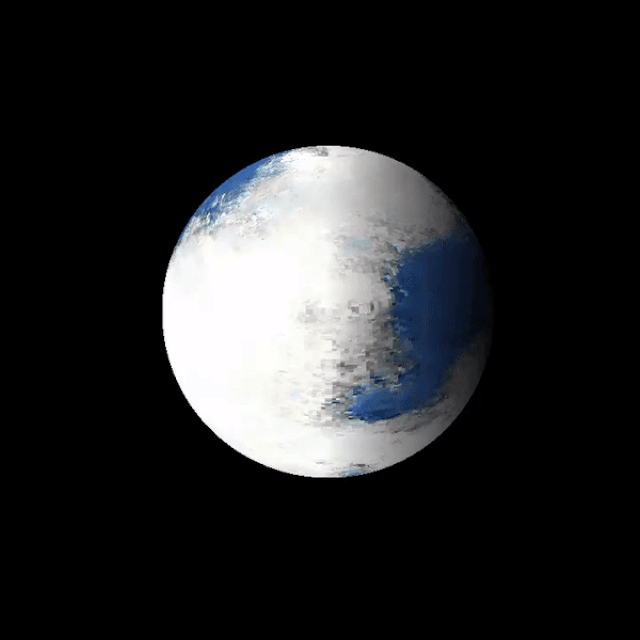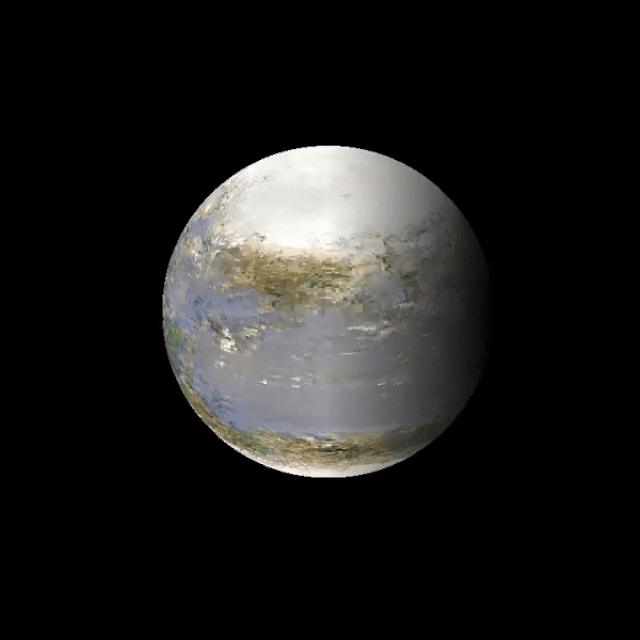You can build your own Earth 2.0 with the awesome website 'Earth-like'
A new website allows you to experiment with Earth-like planets.

You can now build your very own Earth 2.0! A new website allows users to create an Earth-like planet with a wide selection of options in an effort to demonstrate how many of the new exoplanets lauded as "Earth-like" may not resemble our planet at all. The researchers behind this website hope to clear up some of the confusion about what the phrase "Earth-like" really means.
"It is very tempting to think that an Earth-sized planet is like our habitable Earth," Kana Ishimaru, a graduate student at the University of Arizona, told Space.com in an email. "But changing only one property of the planet can affect the environment significantly."
Ishimaru lead the development of the website "Earth-like" and the Twitterbot of the same name while she was an undergraduate student at the University of Tokyo. Within the website, users can manipulate factors including the land-fraction and volcanism of the planet and where it lies within the habitable zone, the distance from a star where liquid water can remain on the surface. These small shifts can dramatically affect the environments on the surface of a planet.
Related: Our Interstellar Neighbors: 5 Potentially Earth-Like Planets Nearby

Between the thousands of exoplanets revealed by NASA's Kepler Space Telescope and the bounty expected by the Transiting Exoplanet Survey Satellite (TESS), along with worlds clarified with other instruments, many planets whose size and mass are similar to Earth have been publicly heralded as "Earth-like."
But a variety of factors could mean that those worlds are as different from Earth as Venus, a solar system world often heralded as Earth's twin that is at times hot enough to melt lead. Ishimaru's advisor, Elizabeth Tasker, worried that these planets were too-often viewed as true Earth twins, identical to our own world in their ability to allow life to evolve, when in fact they are likely to be dramatically different. With this in mind, she set off to build a website where anyone could probe how small changes in planetary conditions could change its habitability.
"Given we currently know the radius or mass [or both] for most of the Earth-sized exoplanets we've discovered, their surfaces could be wildly different from our own home world," Tasker said in an email to Space.com.
Get the Space.com Newsletter
Breaking space news, the latest updates on rocket launches, skywatching events and more!
The journey of our generation
Planetary scientists have a wealth of models that they can tweak to demonstrate the effect of several different conditions on a planet all at once. By adjusting a variety of inputs, researchers can get a better handle on what kind of conditions are most likely to prevail on far-away planets. But most of these models are very computationally intensive, beyond what a regular space fan can run on their home computers. And they are rarely user friendly, Tasker added.
Instead, she turned her eyes toward a few key elements of planetary conditions that impact the carbon cycle, which moves carbon from Earth's atmosphere to its rocks and back again. Carbon helps to regulate the planet's temperature and makes life as we know it possible.
On Earth, most carbon is stored in rocks and sediments, the ocean and the atmosphere. A gentle rain can kick off the carbon cycle, as atmospheric carbon combines with water that falls to the surface. The resulting acid dissolves rock through chemical weathering to release a variety of ions. These ions are carried to the ocean, where calcium and carbon ions combine to form calcium carbonate. Ocean organisms can also produce calcium carbonate in their shells, which cement together and turn into rock after they die. Plate tectonics can bury one layer of carbon-rich rock beneath another, causing it to melt under extreme heat and pressure and releasing carbon dioxide. Erupting volcanoes carry the carbon gas to the surface and back into the atmosphere, where the cycle starts over again.
By allowing users to fiddle with a world's landmass and volcanism, this website can create dramatic changes in the resulting planets. Additionally, by moving your planet on this website closer to or farther from its star, you can change how much heat hits and heats the world.
Related: Exoplanet Hunters Have a New Plan to Spot Hidden 'Migrating' Worlds
"This model makes it really exciting to think about what kind of surface conditions exoplanets can have," Ishimaru said.
In addition to a website, the project also includes a Twitterbot @EarthLikeWorld. Users can interact with the bot by tweeting the land-fraction of a world, its volcanism, and its habitable zone location and it returns a realistic-looking image of a world that meets those qualifications, though it's not likely to be identical to an exoplanet with the same characteristics.
According to Tasker, the hardest part of the website was keeping the code light enough to run on a website. That became most challenging when they added the option to render an image of the supposed planet. The visual image reveals the land and water percentages as a grey color to indicate volcanic mountainous regions and snowy land to demonstrate the surface temperatures. Originally, the images in the website were pixelated, but colleague Nicholas Guttenberg created a neural network that created a realistic-looking landscape based on images from Google-Earth. The images looked "so cool" that Tasker decided to add them to the website as well, Tasker said.
To keep the website from getting bogged down, the initial calculations run separately from the images. The inputs take only a few seconds. Images can be more challenging and can take 10 seconds or longer.
Already the researchers themselves have learned a great deal from the website.
"The biggest surprise I had was how good our carbon cycle is!" Tasker said. She went on to say that the carbon cycle controls the temperature reasonably well as land is increasingly exposed. "While geological cycles are too slow to save us from global warming, they really pull their weight to make the Earth habitable," she said.
In the future, the website might go beyond the most Earth-like models to consider broader changes in the planets, perhaps including other chemical elements or planet sizes. But Tasker worries that such changes might make the site too bulky, increasing runtimes.
"This is the journey of our generation," Tasker said. "In less than 30 years, we've gone from only knowing the planets of our solar system to discovering thousands of other worlds."
Upcoming instruments such as the James Webb Space Telescope and the Extremely Large Telescope will provide even more detail of exoplanets as they allow scientists to probe the atmosphere of these planets and gain a better understanding of their surface conditions.
"It's an incredible journey and one that may change the entire way humans perceive their place in the universe," Tasker said. "I don't understand why anyone would want to deprive someone of traveling that path through meaningless hype."
- The 6 Most Earth-like Alien Planets
- Exoplanet Kepler-452b: Closest Earth Twin in Pictures
- Sweet Super-Puffs: These 2 Exoplanets Have the Density of Cotton Candy
Follow Nola on Facebook and on Twitter at @NolaTRedd. Follow us on Twitter @Spacedotcom and on Facebook.
OFFER: Save at least 56% with our latest magazine deal!
All About Space magazine takes you on an awe-inspiring journey through our solar system and beyond, from the amazing technology and spacecraft that enables humanity to venture into orbit, to the complexities of space science.
Join our Space Forums to keep talking space on the latest missions, night sky and more! And if you have a news tip, correction or comment, let us know at: community@space.com.

Nola Taylor Tillman is a contributing writer for Space.com. She loves all things space and astronomy-related, and enjoys the opportunity to learn more. She has a Bachelor’s degree in English and Astrophysics from Agnes Scott college and served as an intern at Sky & Telescope magazine. In her free time, she homeschools her four children. Follow her on Twitter at @NolaTRedd










